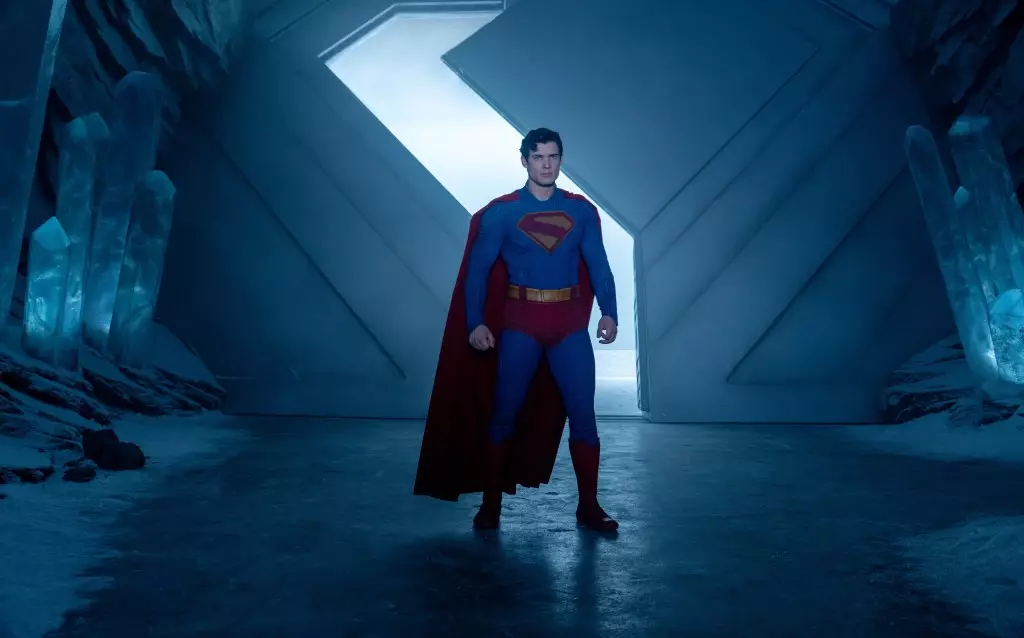Superman’s latest cinematic incarnation, helmed by James Gunn, emerges as more than just another superhero flick; it embodies a strategic attempt to revitalize a franchise that has suffered from inconsistent storytelling and waning audience engagement. As the world watches, the film’s early performance signals that, despite the industry’s penchant for formulaic releases, there remains an appetite for new takes on iconic characters. This effort to reinvent Superman underscores a broader belief: even in a crowded market of superhero content, a well-crafted reboot can carve out its niche and spark renewed interest. However, relying on nostalgia alone is a gamble—what truly distinguishes Gunn’s vision is its promise to blend traditional heroism with contemporary storytelling that appeals across generations.
International Markets as Crucibles of New Narratives
The film’s surprisingly strong debut across diverse territories illustrates an important shift—it is not merely Western audiences holding the destiny of blockbuster hits but global markets increasingly dictating success. Markets like France, Korea, Italy, and Indonesia have welcomed Superman with open arms, reflecting a shared desire for familiar yet fresh narratives. Notably, the film’s performance in France exceeds previous Marvel and DC benchmarks, hinting that audiences crave culturally resonant, high-quality storytelling that transcends mere franchise loyalty.
In Korea, despite the country’s economic struggles, the film’s premiere matched the performance of blockbuster staples like Guardians of the Galaxy. This demonstrates a crucial insight: well-made superhero films still resonate, even in markets considered economically depressed or saturated with competing entertainment options. Regions like Indonesia and the Philippines also responded favorably, with the latter securing a commanding market share—no small feat considering the increasing dominance of local and regional productions. These early international results suggest Superman’s reboot has the potential to be more than a box-office hit—it’s poised to reinvigorate cultural relevance and global appeal for the character.
Market Dynamics and the Power of Strategic Release Timing
The film’s staggered international rollout highlights the importance of strategic timing in maximizing impact. Debuting on Bastille Day in France provided an ideological advantage, positioning Superman as a patriotic and aspirational figure amid a culturally significant holiday. Meanwhile, opening in markets like Mexico and Brazil with record-breaking numbers indicates that timing coupled with effective regional marketing can significantly influence performance.
Notably, the heavy international presence of IMAX screenings—constituting 18% of revenue—suggests a calculated push toward premium experiences. This is an acknowledgment that the spectacle of Superman remains a key driver, appealing to audiences seeking immersive escapism. The film’s early box office figures reflect a nuanced understanding of market dynamics, where local tastes, holidays, and socioeconomic factors combine with global cinematic trends. It signals that blockbuster success now hinges less on sheer marketing muscle and more on precise cultural alignment and strategic execution.
The Limitations and Confronting Market Realities
Despite the promising start, the film faces an unavoidable truth: global markets are complex, often unpredictable, and heavily influenced by external factors. The Chinese opening, while respectable, might not translate into sustained success—a reminder that international applause cannot compensate for pre-existing market fatigue or rising competition. Furthermore, the film’s domestic performance, while solid, may not reach the legendary heights of earlier Superman outings, reflecting a shifting audience preference towards streaming and diversified content sources.
The heavy reliance on international markets is both a boon and a barrier. While global audiences demonstrate receptivity, a multichannel entertainment landscape complicates efforts to build long-term franchise loyalty. Studios must now balance blockbuster releases with ongoing engagement strategies that adapt to rapidly changing consumption habits. Gunn’s Superman, despite its early promise, must prove that it can sustain momentum beyond initial openings—this, in a market increasingly wary of overexposure and franchise fatigue, remains the ultimate challenge.
A New Chapter, But at What Cost?
The early box office success underscores a crucial point: audiences are ready for a Superman that evolves with the times. Yet, behind the enthusiasm lies a nerve-wracking reality—that blockbuster spectacle alone cannot guarantee enduring cultural relevance. As global audiences become more discerning, the industry must recognize that superficial appeal is no longer enough. Gunn’s reboot offers a fresh opportunity, but only if it delivers authentic storytelling and considers social nuances, rather than relying solely on established brand power.
In this climate, the old formulas of superhero success—massive marketing blitzes, synchronized international releases, reliance on nostalgia—are becoming less effective. Instead, the future hinges on quality, cultural sensitivity, and strategic delivery. Superman’s reboot stands at a crossroads: capable of reigniting the character’s relevance or slipping into the background of endless endless franchise churn. The early figures are promising, but the real test remains ahead—to transform initial excitement into lasting cultural impact and sustainable box office growth.

